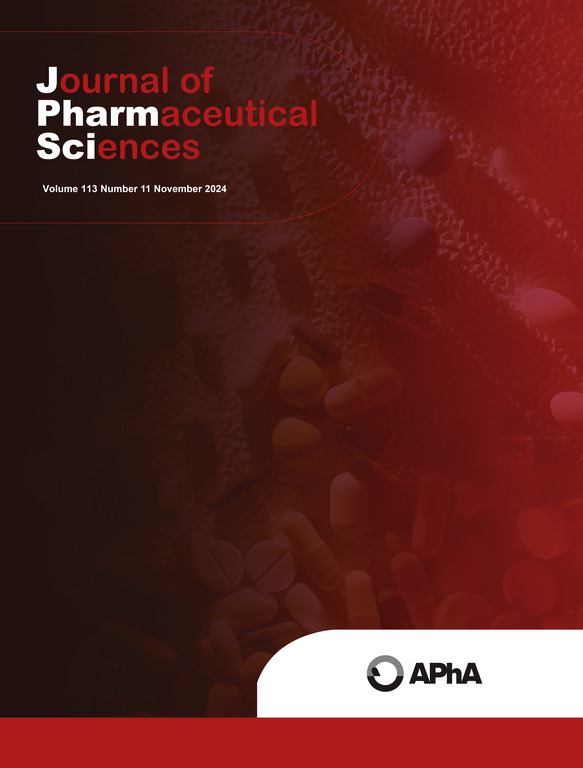Rational cyclodextrin formulation design through insights into drug release mechanism in the gastrointestinal tract via molecular dynamics simulations
IF 3.7
3区 医学
Q2 CHEMISTRY, MEDICINAL
引用次数: 0
Abstract
Cyclodextrin formulations are crucial for enhancing the solubility of drugs. Bile salts are recognized as potential agents for displacing drugs from cyclodextrin formulations in intestinal fluids. However, the mechanism underlying this displacement remains unclear. This study aims to investigate the mechanism of competitive displacement using molecular dynamics simulations and to develop guidelines for effective cyclodextrin formulation design. The umbrella sampling method is employed to investigate the binding free energy between bile salts and cyclodextrin molecules, while metadynamics is utilized to simulate the dynamic replacement process. The results indicate that the optimal binding free energy interval between cyclodextrins and drugs ranges from -30 kJ/mol to -8 kJ/mol. Additionally, the optimal concentration ratio between drugs and cyclodextrins can be calculated based on the binding free energy. Displacement simulations showed that free single bile salt molecules are more likely to complete the displacement compared to clusters of bile salts. This suggests that the bioavailability of cyclodextrins may be higher in fasting conditions than in the fed state. This study will not only enhance our understanding of the relationships between cyclodextrin formulations and bile salts but also facilitate the rational design of more effective pharmaceutical formulations.

通过分子动力学模拟深入了解药物在胃肠道的释放机制,合理设计环糊精配方。
环糊精配方对提高药物的溶解度至关重要。胆盐被认为是取代肠道液体中环糊精制剂中的药物的潜在试剂。然而,这种转移的机制尚不清楚。本研究旨在通过分子动力学模拟研究竞争性位移的机制,并为环糊精配方的有效设计提供指导。采用伞式采样法研究胆盐与环糊精分子的结合自由能,采用元动力学方法模拟其动态置换过程。结果表明,环糊精与药物的最佳结合自由能区间为-30 ~ -8 kJ/mol。此外,根据结合自由能可以计算出药物与环糊精的最佳浓度比。位移模拟表明,与胆盐簇相比,游离的单个胆盐分子更有可能完成位移。这表明环糊精在禁食状态下的生物利用度可能比在进食状态下更高。本研究不仅加深了我们对环糊精配方与胆盐之间关系的认识,而且有助于合理设计更有效的药物配方。
本文章由计算机程序翻译,如有差异,请以英文原文为准。
求助全文
约1分钟内获得全文
求助全文
来源期刊
CiteScore
7.30
自引率
13.20%
发文量
367
审稿时长
33 days
期刊介绍:
The Journal of Pharmaceutical Sciences will publish original research papers, original research notes, invited topical reviews (including Minireviews), and editorial commentary and news. The area of focus shall be concepts in basic pharmaceutical science and such topics as chemical processing of pharmaceuticals, including crystallization, lyophilization, chemical stability of drugs, pharmacokinetics, biopharmaceutics, pharmacodynamics, pro-drug developments, metabolic disposition of bioactive agents, dosage form design, protein-peptide chemistry and biotechnology specifically as these relate to pharmaceutical technology, and targeted drug delivery.

 求助内容:
求助内容: 应助结果提醒方式:
应助结果提醒方式:


